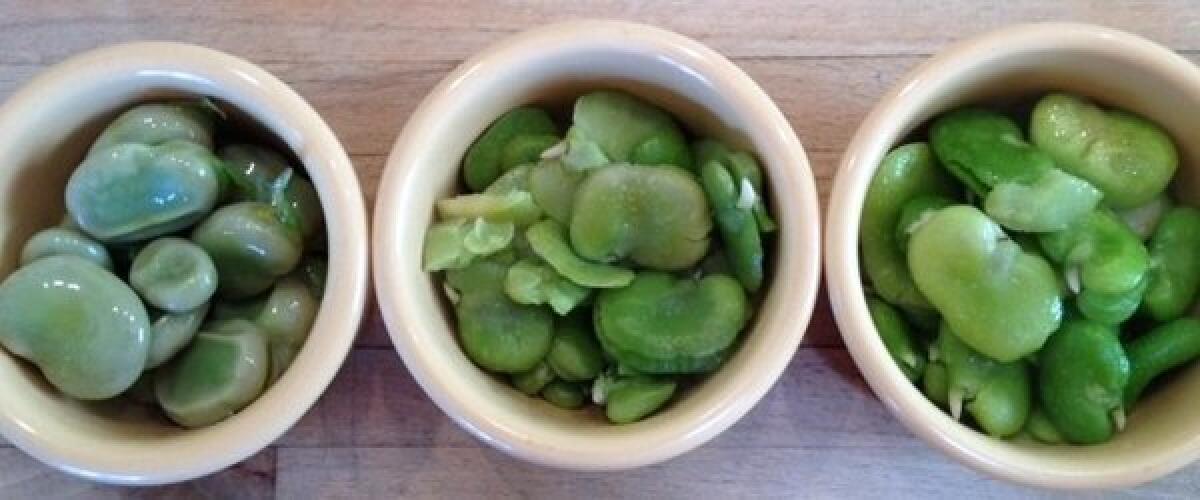The great fava bean debate of 2013 continues

- Share via
Sometimes the smallest thing can arouse the most passion. Last month I wrote a Daily Dish post about my fava bean harvest. I measured how many pods I harvested and what that worked out to in double-peeled beans (8 pounds turned into 3 cups). I thought it was kind of interesting, so I posted a link on Facebook.
And boy did I hear about it. Good cooks from Italy and Spain chewed me out in terms as diverse as gently corrective and “How Dare You!”
It seems double-peeling favas (removing them from their pods and then taking off the skin as well) – which I’ve always done as a matter of course – is not regarded as universally necessary. And that’s putting it mildly.
In fact, from the tone of some of the responses, it seemed to be tantamount to heresy.
Well, if I’m a heretic, I’m not the only one. This weekend the great Mediterranean food queen Paula Wolfert posted a recipe on Facebook that called for double-peeled favas and ran into an even greater firestorm.
“Paula, that is just plain ridiculous!” wrote one intemperate cookbook writer. “If the beans are so old you have to peel them, why, you might as well use dried beans. Don’t, please, keep perpetuating this nonsense.”
Well, as it happened, Monday morning I had a sink full of fava beans after Sunday’s final harvest. So I tried a little experiment. I cooked three batches of favas – one unpeeled, one blanched briefly (to loosen the skins) and peeled, and one peeled raw (the suggestion of Le Comptoir chef Gary Menes).
I simmered 1 cup of whole beans of each type in 1/2 cup of water in similarly sized saucepans with 1/4 teaspoon kosher salt and – because I am not a savage – 1 tablespoon of good olive oil and a little sliced garlic. The beans all cooked in roughly similar times – the unpeeled beans took just a couple of minutes longer.
The clear winner, I hate to say, were the beans that had been peeled raw. They had the brightest flavor and retained the best color. The only downside is that peeling them that way is a total pain; I’d only do it for very special dinners.
The blanched-and-peeled beans had good flavor but the color was slightly faded and they seemed to break apart more. Perhaps I need to work on my blanching technique?
I’d have to describe the unpeeled beans as an acquired taste, at best: Even though the meat was quite tender, the skins were still tough, almost rubbery. The color was a pale gray, particularly where the skin had ballooned away from the bean.
I would never be so bold as to declare this test definitive – favas differ depending on their maturity and these were end-of-season beans. The first beans I tasted from my garden seemed to have skins that were more tender (on the other hand, these mature beans did seem to have more flavor).
The one thing I can say with some certainty is that peeling favas certainly doesn’t hurt.
And before you take me to task for that, I’d ask that you try it yourself.
ALSO:
Finding California wine bargains
More to Read
Eat your way across L.A.
Get our weekly Tasting Notes newsletter for reviews, news and more.
You may occasionally receive promotional content from the Los Angeles Times.









